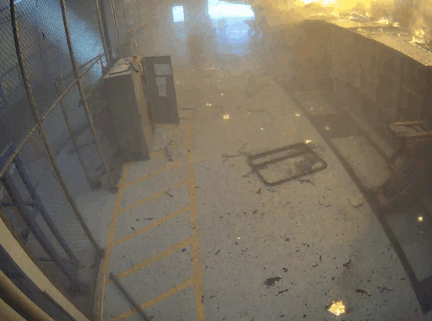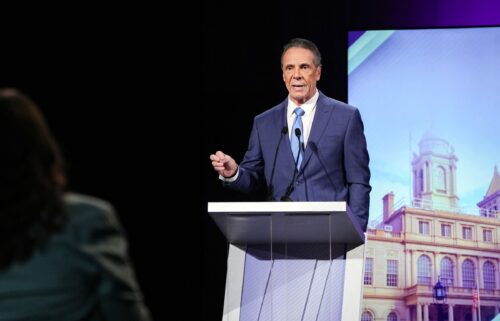How the climate crisis may be changing the way tornadoes behave
By Rachel Ramirez, CNN
Among the cocktail of extreme weather events that plow through the United States, tornadoes can be the most destructive and the most deadly especially for those unprepared for what’s to come.
As severe weather events intensify, occur more often and exacerbate the country’s growing economic toll, science is running to keep up to answer emerging questions of whether climate change is worsening every single disaster.
But unlike heat waves, floods and hurricanes, scientific research about the connection between the climate crisis and tornadoes has not been as easy to make; though climate researchers say uncertainty doesn’t mean it is unlikely, and experts are already seeing changes in how recent tornado outbreaks are behaving.
When a series of twisters uprooted trees, tore down infrastructure and killed dozens of people in Kentucky in December 2021, for instance, meteorologists and climate scientists — careful not to attribute the cause to climate change — underscored the “historic” nature of the tornadic outbreak.
What’s clear, experts say, is that these weather events, no matter how severe, are occurring against the backdrop of human-caused climate change; it just all comes down to discerning how a warming planet is altering weather patterns, including geographical location and frequency, as well as severity.
Scientists say the short-lived scale of tornadoes, coupled with an extremely inconsistent and unreliable historical record, makes connecting outbreaks to long-term, human-caused climate change extremely tough.
Victor Gensini, a professor at Northern Illinois University and one of the top tornado experts, described the 2021 Kentucky outbreak as one of the most remarkable in US history — and while climate change may have played a part in its violent behavior, it’s not yet clear what that role was. That same sentiment can be said with the most recent devastating outbreaks.
Think of a pair of dice, he said. On one die, you altered the value of five to six, which means it now has two sixes — raising the chances of you rolling the pair of dice and getting the value 12. Although you can’t immediately attribute that value of 12 to the change you made, you just altered the probability of that event occurring.
Gensini said that’s similar to how the climate system now works — the more humans pump greenhouse gases like fossil fuel emissions into the atmosphere and change the system, the chances of extreme weather events occurring, intensifying, and changing the traditional location and patterns will amplify.
“When you start putting a lot of these events together, and you start looking at them in the aggregate sense, the statistics are pretty clear that not only has there sort of been a change — a shift, if you will — of where the greatest tornado frequency is happening,” Gensini previously told CNN. “But these events are becoming perhaps stronger, more frequent and also more variable.”
Todd Moore, associate professor and chair of the department of geosciences at Fort Hays State University, said that over the last few decades tornado frequency has increased in vast swaths of the southern Midwest and Southeast, while decreasing in parts of the central and southern Great Plains, a region traditionally known as Tornado Alley.
A study he authored in 2019 indicated that the changing climate, among other factors, could be contributing to this eastward shift in Tornado Alley, resulting in more tornadoes occurring in the more heavily populated states east of the Mississippi River. Moore points to different ingredients that may have led to this shift such as humidity, instability, and a strong wind shear.
His study also found that tornadoes are “clustering on fewer days in the year” and that days with little tornado activity are becoming less common, with outbreaks becoming more frequent during the fall and winter seasons.
“Climatologists are currently trying to determine why these trends are occurring,” Moore told CNN.
Tornadoes take shape under particularly specific atmospheric conditions, but are primarily fueled by warm, moist air from strong winds that shift direction with altitude.
Scientists have warned that the rise in greenhouse gas emissions in the atmosphere is drastically changing the climate system, causing the jet stream — fast-flowing air currents in the upper atmosphere that influence day-to-day weather — to behave oddly.
“An explanation for increased concentration of tornadoes is tenuous,” Moore said. “One hypothesis is that a wavier jet stream is providing more environments favorable for tornado outbreaks, so their likelihood of occurrence is increasing.”
But the offset is that it’s also likely a tornado outbreak was simply triggered by natural forces at play, against the background of climate change.
The World Weather Attribution, a group of the world’s leading scientists that establishes the link between climate and weather, for instance, previously concluded that climate change played little to no role in intensifying the flooding that killed 138 people in Vietnam in 2020.
“It’s also very common when you have La Niña in place to see this eastward shift in highest tornado frequency,” Gensini said. “But if you look at the past 40 years, the research I’ve done … has shown that places like Nashville, Tennessee, for example, or Mayfield, Kentucky … their frequency of tornadoes, their risk of having a tornado has increased over the last 40 years.”
This is backed by a 2021 report from the World Meteorological Organization that found an extreme weather event or climate disaster has occurred every day, on average, somewhere in the world over the last 50 years, marking a five-fold increase over that period and exacting an economic toll that has climbed seven-fold since the 1970s.
As the climate crisis accelerates and further research continues to establish its connection with tornadoes, more people will be vulnerable to the most severe consequences of extreme weather events. And experts say cities shouldn’t put off adaptation plans any longer, and that they should use available climate research and treat them as part of the larger emergency response system.
Gensini said climate change or not, these types of tornado disasters will continue to worsen as humans alter the landscape and build larger, more sprawling cities.
“We have more assets and more targets for the severe storms to hit,” he said. “So even if you take climate change out of the equation, which is very likely to make the problem worse, we still have this issue of human and societal vulnerability.”
The-CNN-Wire
™ & © 2022 Cable News Network, Inc., a Warner Bros. Discovery Company. All rights reserved.



